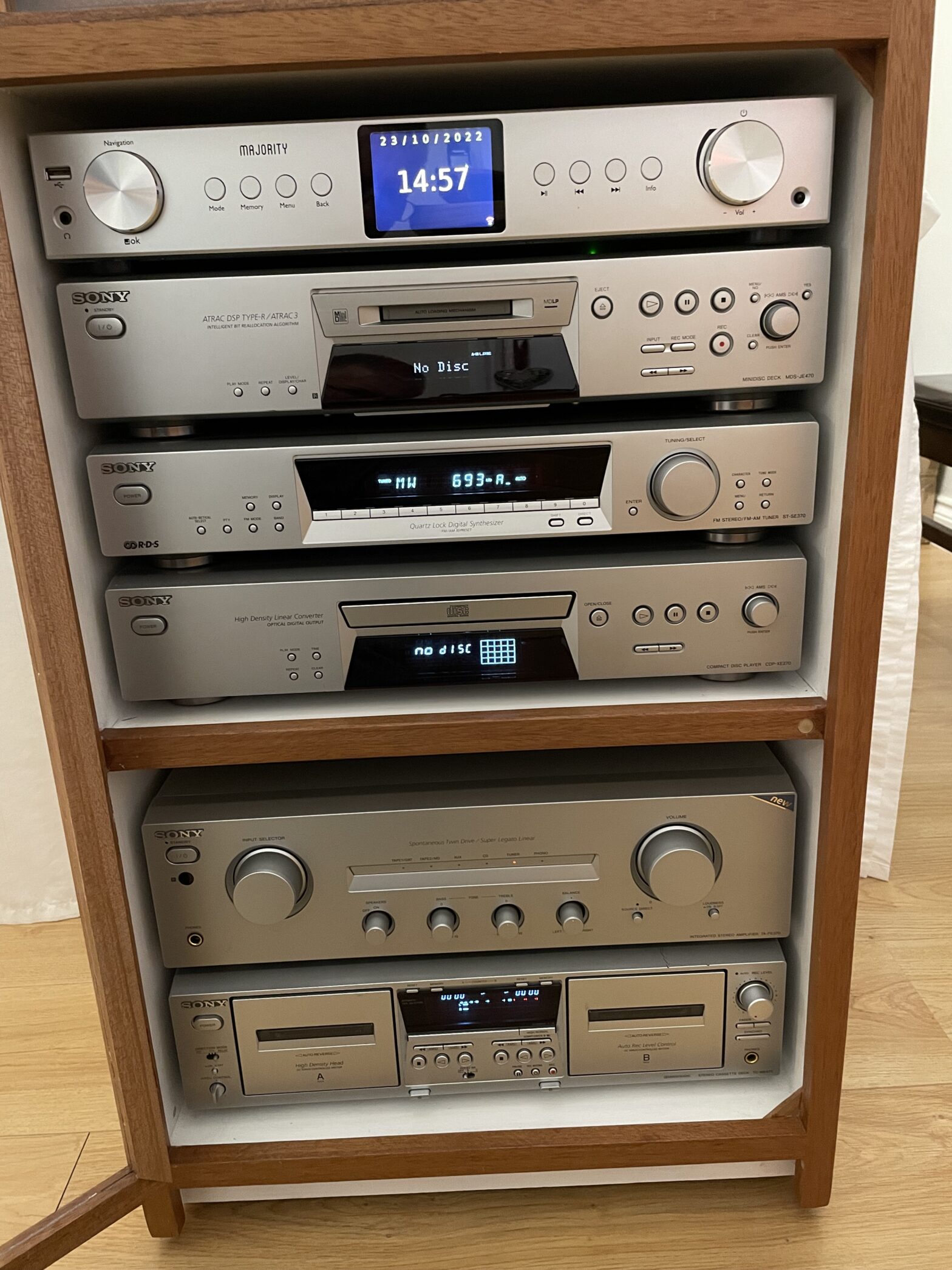I recently decided to go on a trip down memory lane and rebuild the hi-fi system that really helped to kickstart my love for audio. It was my first ‘new’ separates system – a major upgrade on the boomboxes and midi systems I’d had up until that point, and a departure from the vintage hi-fi I used to collect and tinker with, and still do to this day. This blog isn’t hi-fi focused so I won’t detail that side of things too much. Suffice it to say that I enjoyed, and discovered many an album and artist on this system, spent countless hours as a pre-teen browsing the analogue radio network in my area, and made a huge number of mixtapes, many of which are sadly lost to time.

I wanted a cabinet to store the components in to keep them in mint condition. I went with a simple design in and opted for 12 mm plywood owing to the current cost of materials in the UK. I’d hide the edges with a face frame in Sapele, reclaimed from a salvaged front door.

Unfortunately it seems you can’t buy straight, flat plywood any more – or at least not from the builders merchants. I’d have been far better to use a thicker material but I persevered, and as a result the project is one that I’m satisfied though not entirely thrilled with. I tried to keep it as compact as possible, but I took it a bit too far. It’s difficult to install and remove anything inside as it’s so tight, especially the turntable which misses the lid stay by a few millimetres.

I also made the turntable section too tall. I did this with the intention that the cabinet could house other components in future if I decided to move this system, but I had to make a riser platform for the unusually slim Technics turntable to be easily accessible beneath the lid. I did this using leftover ply and Sapele, heavily braced so it won’t resonate and will remain flat and level.

My final error was using the same material for the face frame as I did for the door. The strips were 18 mm thick by 22 mm wide, and the door and lid were glazed with 2 mm polycarbonate sheet. It’s surprisingly strong, though there is some flex. I did it this way to minimise the dimensions as much as possible, but in hindsight a larger cabinet would have been much nicer to live with in the long term. It’s a nice storage unit and would make a great drinks cabinet, but its utility is fairly limited as a hi-fi unit.

The side panels were rebated to locate and better support the top, bottom, plinths and shelf. It turned out that the ply wasn’t exactly 12 mm in thickness, so the rebates routed with an accurate 12 mm router bit did require some filling in places. Besides the mitres in the face frames, which are also rebated to slot over the plywood edges, there is no special joinery in this cabinet. The entire thing is glued together with Evo-stik exterior wood glue because it was what I had to hand.

The finish is satin white wood paint (two coats) over the ply, and 2 coats of water-based satin varnish over both the white-painted ply and the Sapele face frame. This was done as the surfaces of the ply were so thin, it was impossible to sand out the imperfections for a natural wood finish without going through the veneer. The quality of this board really was pretty terrible.

The result is a cabinet that I am happy with. I would like to have another go when the cost of materials begins to come down. I’d make it larger, and probably choose an MDF substrat – mellamine-faced perhaps – as an alternative to the ply, with thicker face frames, a full glass door and a glass lid that gives better access to the front of the turntable. Nevertheless I think the finished product turned out well, and is a nice way to display a very sentimental system.









Share Your Thoughts